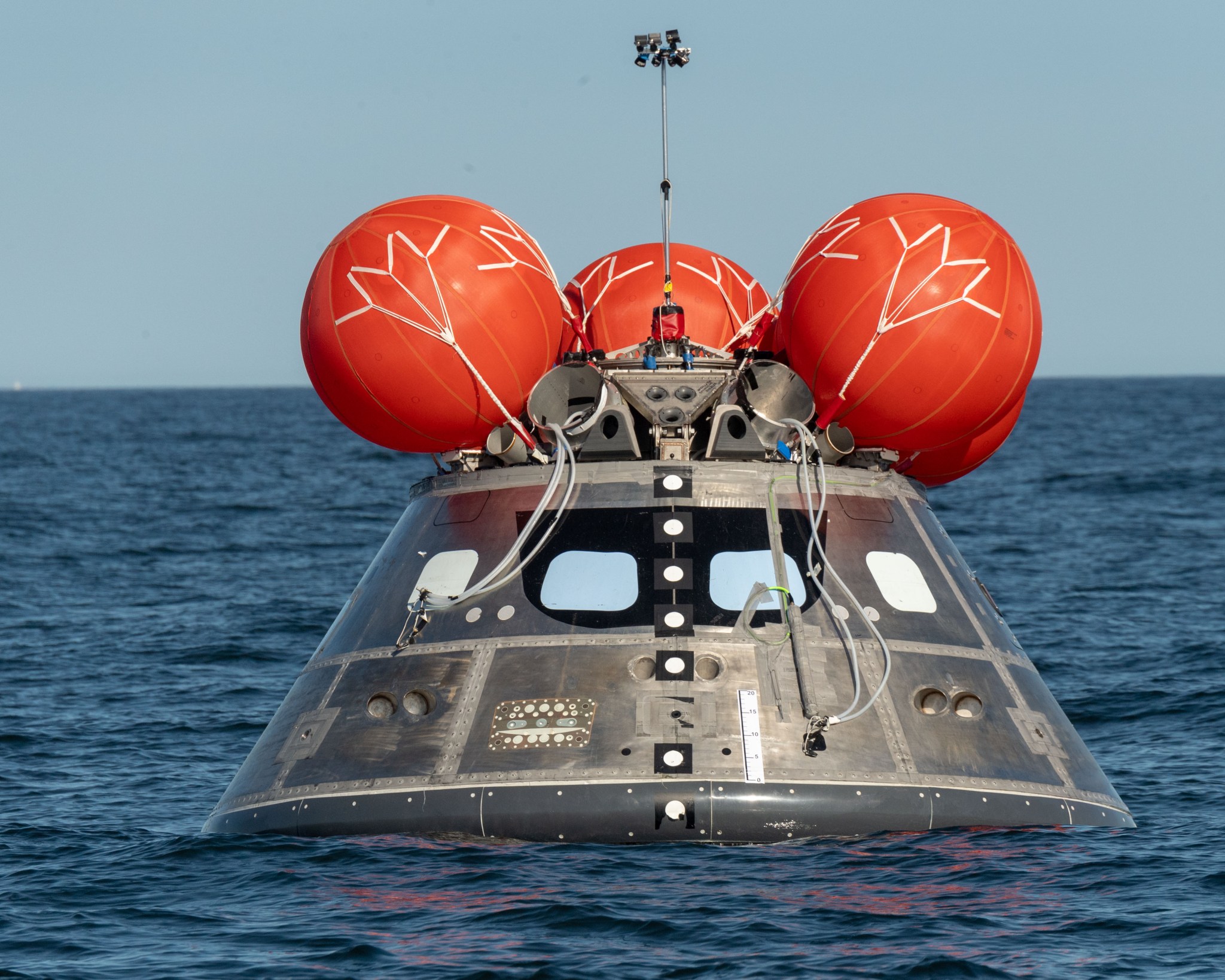
As NASA progresses toward Exploration Mission-1, the first flight of its Orion spacecraft and Space Launch System rocket, engineers are ensuring every system in the spacecraft can endure the harsh environment of space thousands of miles from home and safely return to Earth.
A team at NASA has been working to perfect the last spacecraft system to deploy – the airbags on top of the crew module – which will reorient the capsule and keep it upright and stable after splashdown in the ocean and potentially through rough waves or high winds.
Engineers have implemented a series of improvements on the system to upright the spacecraft since Orion’s successful flight test in space in 2014. During the flight test, three of the system’s five bags did not properly inflate, though the spacecraft remained upright in the water. Improvements include thickening the inner bladder of each round airbag to make it more durable, changing how the bags are packed, and developing a harder cover.
The Orion Crew Module Uprighting System (CMUS) consists of five bags that are packed tightly in containers and stored atop the Orion capsule. After landing, the bags deploy from the same area where landing and recovery systems, such as parachutes and beacons, are stowed. This area also contains protrusions and sharp edges that could potentially snag the bags or tethers that keep the bags attached to the spacecraft. The upgrades and testing further demonstrate the system can work in these delicate conditions.
In early December, the CMUS and Neutral Buoyancy Laboratory (NBL) teams at Johnson Space Center successfully completed two tests off the coast of Galveston, Texas, that were instrumental in validating the bags performed as intended. The two test cases covered scenarios where only four of five bags inflated.
“We’ve tested the uprighting system in the calm water environment of the NBL pool at Johnson, and these tests in the Gulf helped us understand how the overall system works in the natural wave environment,” said Barbara Janoiko, lead for integrated testing of Orion’s uprighting bags. “These tests help us make sure we haven’t overlooked anything from a system performance perspective and that our computer models are correct.”
NASA partnered with the United States Coast Guard (USCG) and Air Force, and Texas A&M Galveston teams to perform the tests.
“By combining the spacecraft expertise and testing experience of the NASA team with the operational expertise of our multiple partners, we gained important data on our system and developed test techniques that we can use in our next phase of testing,” said Tara Radke, lead for Orion Landing and Recovery Systems.
Next year, the team will test the uprighting system in the ocean where rougher wind and wave conditions are more like those expected when Orion lands approximately 50 miles off the coast of San Diego after returning from deep space.
























